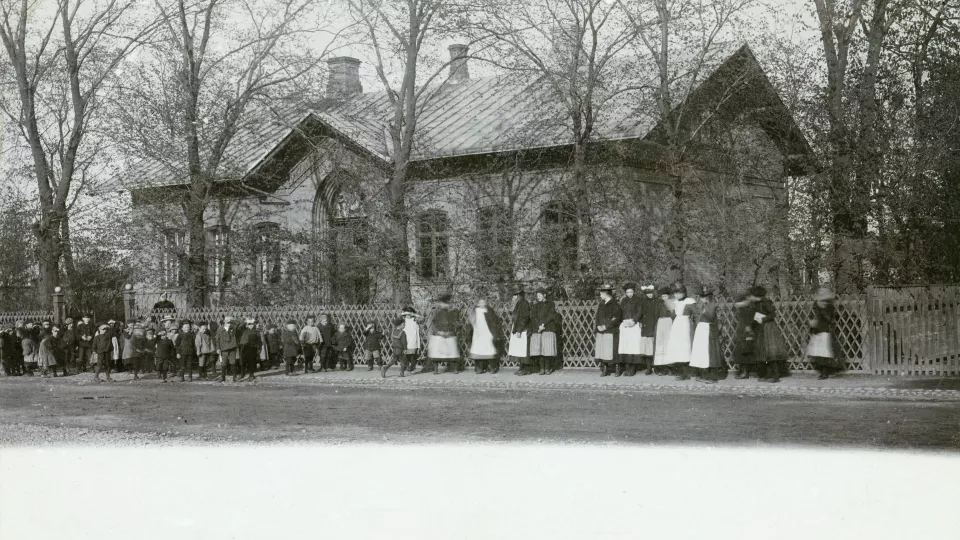The study shows that at the beginning of the 20th century it was unusual for children in Landskrona to go to day-care*, today called preschool; only 8% of the children were ever enrolled. By comparison, today close to 86% of children go to preschool in Sweden**.
The researchers found that day-care attendance was more common among children of single mothers and those from lower socio-economic backgrounds.
To conduct the study, the researchers searched for enrolment books from daycares in Landskrona. These were found in the Landskrona City Archives and also at Eriksgården's preschool. All enrolment lists were photographed and digitized.
They were among the first initiatives aimed at supporting mothers and young children, and became a significant part of the country's welfare state.
Using the children's names and dates of birth, the day-care material was linked to data from an existing database (Scanian Economic Demographic Database), which contains information about all families in Landskrona during the time, including their occupations, income, and family status.
- The findings help us understand how day-care centres functioned in the past and who were most helped by these day-care centres, says Annika Elwert, associate senior lecturer at the Department of Sociology in Lund.
- The Swedish day-care system originates from early charity initiatives in the nineteenth and twentieth centuries. They were among the first initiatives aimed at supporting mothers and young children, and they became a significant part of the country's welfare state.
This new study has focused on understanding the factors that influenced day-care enrolment in southern Sweden during the early twentieth century. The study used archival records of children born between 1900 and 1935 who attended daycare in the city of Landskrona.
These records were complemented with data about their families and homes, as well as information on all other individuals living in Landskrona at the time. The compiled data enabled a comparison of families whose children were enrolled in daycare with those whose children were not.
In the next phase of the project, the researchers will investigate whether there were advantages for children who attended preschool. Among other things, the they will examine whether children who attended preschool had higher or lower grades than children of the same social class who did not attend preschool.
*Day-care - a translation of the Swedish "daghem", a Swedish system for child-care which was transformed in 1998 into today's "förskola" (preschool). The Swedish preschools enroll children from about one to five years old.
** Preschool - a translation of the Swedish "förskola". According to ”Skolverket” nearly 86 percent of Sweden’s children aged one to five were enrolled in “förskola” autumn 2021.



